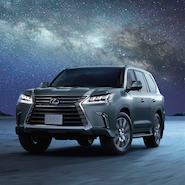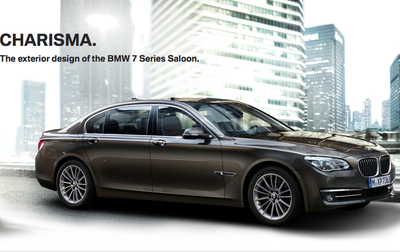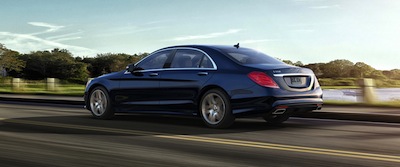 Lexus LX570
Lexus LX570
Spanish-language advertisements contribute more to the growth of the automotive sector than English-language ads, according to a new report by the Association of Hispanic Advertising Agencies.
To achieve a nine-percentage-point growth in total market annual revenue, only five points of ad spend need to be reallocated from English to Hispanic media. The results suggest that the Hispanic market may be underserved and is a good target for automakers looking to grow.
"This year, we have found in our study series that consumer packaged goods, retail, financial services and insurance companies shifting ad spend allocation from English to Hispanic-dedicated media experience a significant boost in corporate revenue growth while companies decreasing Hispanic allocation tend to see a slow down," said AHAA research chair Carlos Santiago in a statement. "The numbers we are seeing in the auto sector is far greater.
“This is one of the highest allocation growth impacts found in any category studied thus far, pointing to the vast untapped opportunity available across all categories."
"AHAA Insight Series: Hispanic Media Allocation Trends 2010-14 & Impact on Total Market Revenue Growth" looks at the changes in ad spend and the total growth of over 25 automakers.
A change is gonna come
The findings are not exclusive to the automotive sector and suggest a deprived Hispanic market eager to experience new brands. Automakers seem privy to the trend, increasing ad spend in Hispanic media by 163 percent from 2010 to 2014 compared to a 30 percent increase in English media.
The shift in allocation of funds in automotive outpaces other sectors. According to the report, the sector doubled the average Hispanic media allocation from 4.2 percent to 8.4 percent in four years.
 BMW 7 Series Saloon
However, much of the data also suggests luxury brands are behind. Toyota and Nissan are leaders in total ad spend with more than $310 million between the two of them, while Autozone and Hyundai lead in terms of percentage, at 21 percent each. Nissan again follows, at 16 percent.
Toyota’s ad spend includes Lexus, but other luxury brands did not make noticeable shifts in ad spend allocation between 2010 and 2014. BMW's decreased while Mercedes-Benz’s was nearly identical and Volksgwagen's, which includes Audi and Porsche, increased by a mere percentage point.
BMW 7 Series Saloon
However, much of the data also suggests luxury brands are behind. Toyota and Nissan are leaders in total ad spend with more than $310 million between the two of them, while Autozone and Hyundai lead in terms of percentage, at 21 percent each. Nissan again follows, at 16 percent.
Toyota’s ad spend includes Lexus, but other luxury brands did not make noticeable shifts in ad spend allocation between 2010 and 2014. BMW's decreased while Mercedes-Benz’s was nearly identical and Volksgwagen's, which includes Audi and Porsche, increased by a mere percentage point.
 Mercedes S Class
It should also be noted that these automakers experienced some of the highest revenue growth rates in the market. Income inequality and other economic factors might make the effect of Hispanic ad spend different for luxury brands.
Speak my language
At the same time, the increased response echoes recent reports about localization.
Global heterogeneity presents many obstacles for brands looking to maximize their share through localization efforts, according to a September 2015 report from L2.
The share of ecommerce sales in the luxury industry has tripled since 2009 and is set to triple again by 2025, but obstacles such as currency, language, selection and payment method may make it difficult for brands to expand and capitalize on their reach. As social media, the Web and the development of BRIC and Asian nations, as well as Sub-Saharan Africa in the future give brands more visibility, it is essential that they monetize global consumers (see story).
What the new data suggests is that while localization is often thought of as making changes to reach new markets, many people within already-accessed markets may not speak the primary language. However, some brands are looking for new consumers in markets further from home.
For example, British automaker McLaren is looking to jump on the Middle Eastern market with a bespoke model inspired by the region’s loyal consumer base.
Mercedes S Class
It should also be noted that these automakers experienced some of the highest revenue growth rates in the market. Income inequality and other economic factors might make the effect of Hispanic ad spend different for luxury brands.
Speak my language
At the same time, the increased response echoes recent reports about localization.
Global heterogeneity presents many obstacles for brands looking to maximize their share through localization efforts, according to a September 2015 report from L2.
The share of ecommerce sales in the luxury industry has tripled since 2009 and is set to triple again by 2025, but obstacles such as currency, language, selection and payment method may make it difficult for brands to expand and capitalize on their reach. As social media, the Web and the development of BRIC and Asian nations, as well as Sub-Saharan Africa in the future give brands more visibility, it is essential that they monetize global consumers (see story).
What the new data suggests is that while localization is often thought of as making changes to reach new markets, many people within already-accessed markets may not speak the primary language. However, some brands are looking for new consumers in markets further from home.
For example, British automaker McLaren is looking to jump on the Middle Eastern market with a bespoke model inspired by the region’s loyal consumer base.
On Nov. 11, McLaren Automotive debuted the 650S Spider Al Sahara 79, created by McLaren Special Operations exclusively for the region. The Middle East is poised for significant growth in the future, and entering now with exclusive products is a step toward winning over the region’s affluent consumers (see story).
Luxury brands may be starting to make the shift and target the Hispanic market as well.
"The automotive industry benefited from Hispanic expenditures in durable goods during the Great Recession and marketers saw this as a solid rationale to invest,” said Linda Lane Gonzalez, AHAA chair, in a statement. “Because of early and significant investment, auto marketers have been successful at migrating Hispanic consumers towards higher-end models, and luxury auto brands are making their entry into the Hispanic segment."
Final Take Forrest Cardamenis, editorial assistant on Luxury Daily, New York